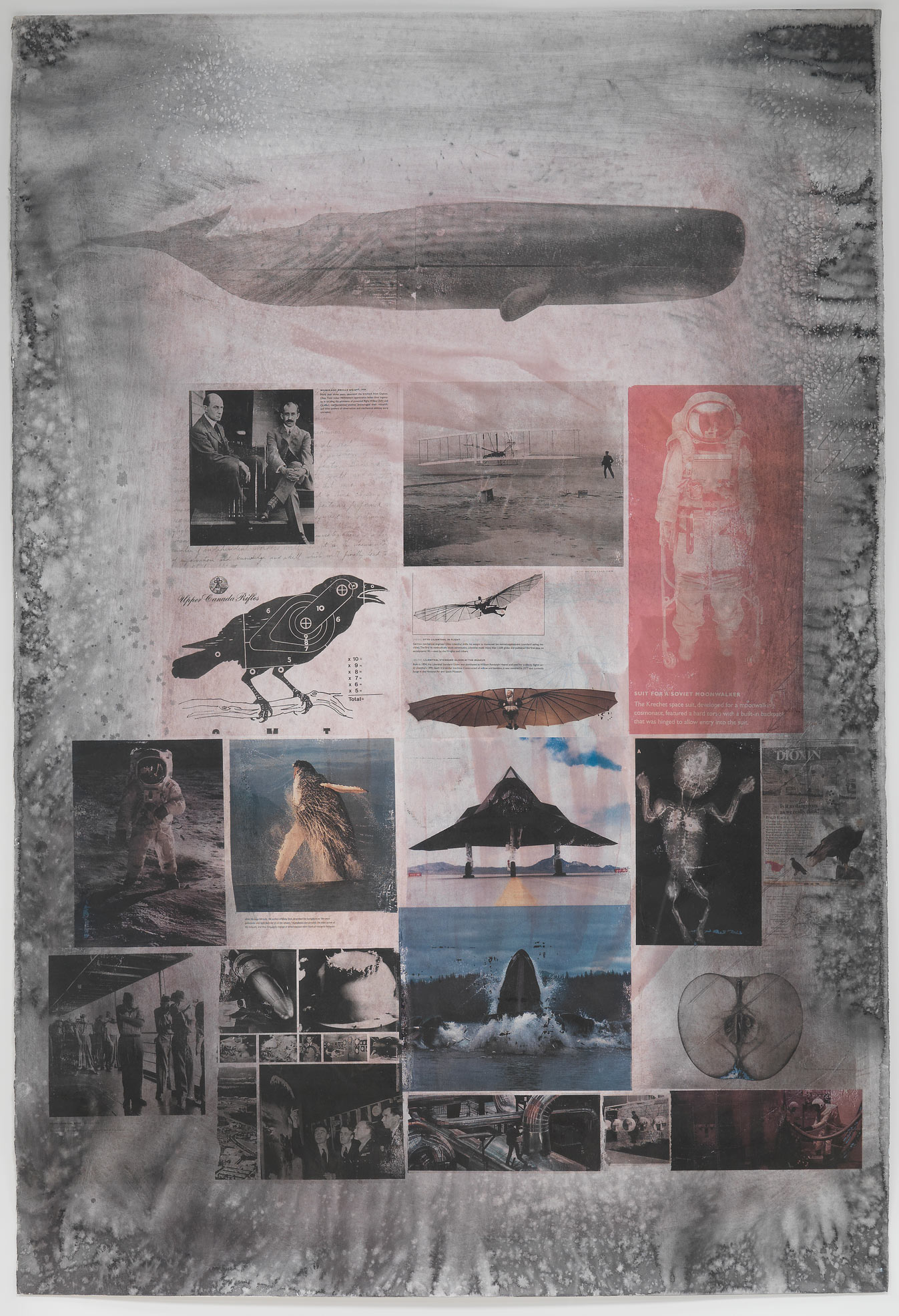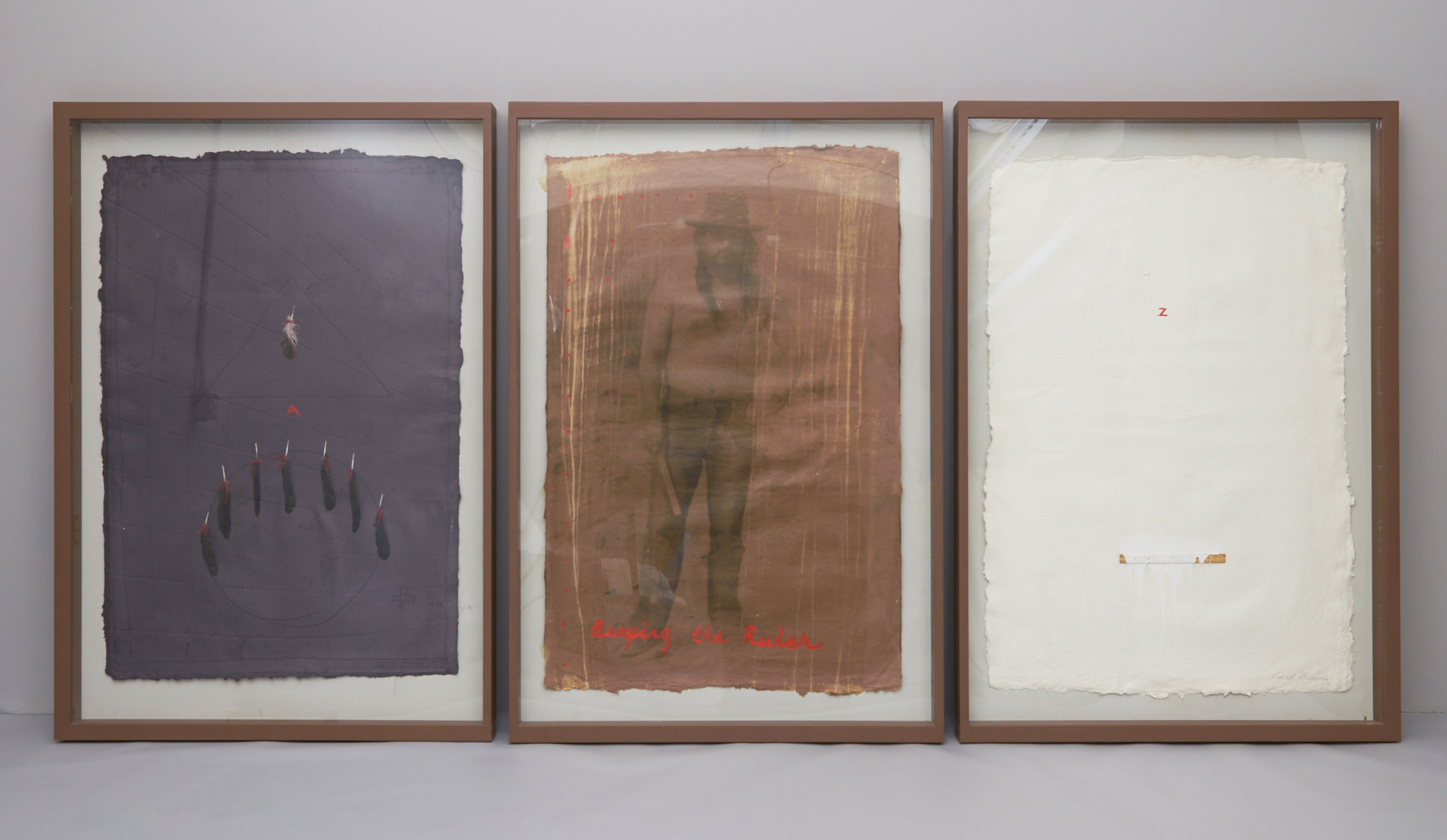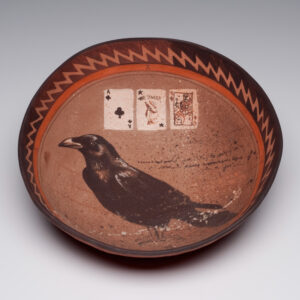Whose Space Is It Anyway 2002

Carl Beam, Whose Space Is It Anyway, 2002
Paper, ink, watercolour, 169 x 121.5 x 7.7 cm
National Museum of the American Indian, Smithsonian Institution, Washington, D.C.
© Estate of Carl and Ann Beam / CARCC Ottawa 2024
Whose Space Is It Anyway is a significant example of how semiotics influenced Carl Beam’s collage method, and it represents the culmination of his decades-long development of a visual library of symbols. He asks his viewers to be open to simultaneous readings of image signs, and to immerse themselves in the work’s allusive visual poetry. The “space” that he references is both specific—the land, sea, moon, womb—and metaphysical, a poetic space formed by bringing together disparate images.
The main image of the whale, symbolizing humanity and the earth, signifies that its fate and ours are connected. I remember my father saying many times, in artist talks and among his colleagues, “I keep hearing, ‘Save the planet, save the earth,’ as if it’s some other outside thing. But people should really be saying, ‘Save the humans,’ because we are not some separate part of this system.”

To compose as dense an image field on such a relatively large scale, Beam made numerous small studies on paper. The preliminary studies include many with images of an apple, which was also used in his large piece Epistemological Reconstruction Work, c.1990, a photo emulsion on canvas. In the lower left-hand corner of Whose Space Is It Anyway is an image of soldier-witnesses at the first atomic bomb test blasts at the Trinity Site in New Mexico, standing in plain clothes, covering their eyes as instructed.
Whose Space Is It Anyway was purchased by the Smithsonian Institution after Beam’s passing, although the absurdity of the circumstances surrounding the purchase is something he himself might have orchestrated as a parody of Indigenous creation and its relationship to arts institutions. The Smithsonian originally wanted to purchase the Burying the Ruler triptych that had toured with Beam’s retrospective exhibition. But that piece had eagle feathers tied to one panel, and because of restrictions imposed by the 1977 amendment to the Migratory Bird Treaty Act (1918), it could not enter the United States. There were many conversations about whether the feathers could be replaced. Finally, however, it was determined that the Smithsonian should simply choose a different piece, Whose Space Is It Anyway—a decision that disregarded the political comedy of the imaginary line (the Canada-U.S. border) that the first painting could not cross.

 About the Author
About the Author
 More Online Art Books
More Online Art Books
 Acknowledgements
Acknowledgements